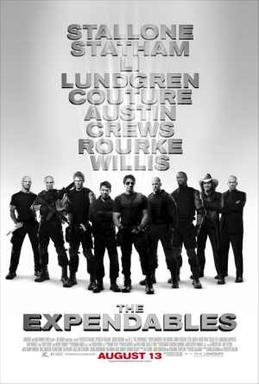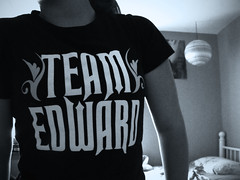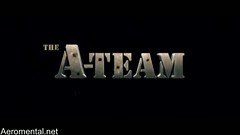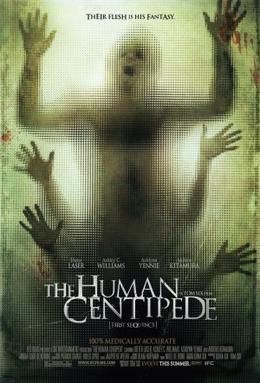TV Show Adaptations have been the theatrical kiss of death for a long time now. Not because the idea of taking an old beloved television series and modernizing it in a feature film isn't a plausible idea, but because the studios almost always drop the ball. Most of the time, they play the revival for comic effect instead of nostalgic revival, like
The Dukes of Hazard,
Starsky and Hutch and
Charlie's Angels. When they occasionally do take the update seriously, like
Miami Vice,
The Mod Squad and
Swat, it turns out that no one really wanted one in the first place. Then you have just flat out cinematic abortions like
The Avengers,
Bewitched,
Mission Impossible and
Wild Wild West. Classic-cartoons-turned-live-action-films like
Fat Albert,
Scooby Doo,
Inspector Gadget,
Josie and the Pussycats and
The Flintstones populate their own private level of Hell.
So when do the studios get it right? Not very often, I'm afraid. But in the case of
The A-Team, a generation's favorite soldiers of fortune have escaped the land of fond childhood memories unscathed. Of course, if anybody could do it, it would have to be these guys. Hell, they escaped a federal prison using garbage bags and hair dryers. Take that,
MacGyver.
From the opening scene, you know you are in good hands with this modern revision of America's favorite wrongfully imprisoned special forces soldiers turned vigilantes on the run. The film's (and main character's) introduction is stylistic, endearing, and undeniably cool. There is no attempt to mimic or mock the original show's style, which keeps it from falling into the realm of intentional camp, but it still manages to convey that childish joy and wonder that went along with watching the A-Team improvise their way through adventure after adventure. This is just as much an achievement of the actors as it is the filmmakers; much like J.J. Abrams'
Star Trek reboot, the emphasis isn't on mimicking the original actors, but making the characters their own. This is especially an achievement for Quinton Jackson, who wound up with the task of filling Mr. T's combat boots as B.A. Baracus. The end result is that you don't feel like you are watching actors reprising old characters, but the characters themselves, and that's the hardest part of this kind of cultural adaptation. They even manage to squeeze the original theme-song in without making it feel campy. Now that's an achievement.
Size and scope are the most noticeable difference between the movie and the original TV show. Like any low-budget prime-time series, The A-Team filled most of its action sequences with air mortars, car flips, and stunt men pinwheeling through the air from fake explosions. Compare that to the film's budget of $110 Million, and suddenly you go from air mortars to exploding CGI tankers and high-speed chase sequences with helicopters and fighter drones. This kind of over-the-top spectacle threatens to overwhelm the film's modest origins at times (especially during the climactic ending), but the superb acting and sharp dialogue help anchor the film in its nostalgic roots. Combining nostalgia with modernization is hard, especially when dealing with a show as iconic as The A-Team. Let's face it, how many TV shows can you name from just hearing someone hum the first four notes of the theme song?
It also helps that the screenwriters know how to do a proper villain. A lot of action films these days (since the 90s, actually) make it a habit of presenting dark, foreboding bad guys who smirk maliciously and kill puppies every ten minutes just to remind everyone how evil they are. This is far from the case with The A-Team; Patrick Wilson and Brian Bloom are given dark characters with personalities that make them as entertaining and fun to watch as the heroes. They do just as much wisecracking as the good guys, and manage to keep plot-forwarding scenes from feeling like mere pauses between action sequences. They're so fun and colorful, you wouldn't mind seeing them team up in a spin-off show (maybe they could run a day-care center together and solve crimes at night?). The rapid-fire banter throughout the film elevates this feeling, and often the dialogue actually increases the tempo of an action sequence instead of slowing it down.
The real kick in the pants is that The A-Team hit the screens only a month or so after the abysmal
MacGruber. Side-by-side, these are the perfect Goofus and Gallant of adapting 80s TV shows. On one hand, you have people unwilling to seriously tackle an iconic prime-time show, so the instead do a mock-parody-spoof and tank the whole thing. On the other hand, The A-Team is modernized, taken seriously enough to not mock itself self-consciously, and manages to make an entertaining action film that retains the charm and appeal of the original series. You see, that's how it's done.
The biggest complaint I probably have regarding the film is the lack of a Mr. T cameo. An after-credits sequence features Bradley Cooper and Shartlo Copley bumping into Dirk Benedict and Dwight Schultz (the original Face and Murdock), but Mr. T and George Peppard were conspicuously absent. Peppard's reluctance to appear is understandable, considering he'e been dead for fifteen years now. So what's Mr. T's excuse? Seems he doesn't approve of the show being remade into a violent, racier PG-13 action film. It is usually comforting to know that some things never change, but I don't know how comforting it is that Mr. T still conducts his personal and business life in the same cartoonish black-and-white moralistic grandstanding that predominated his act when he appointed himself Protector and Mentor of All Children in the 80s. I could understand if he simply didn't want anything to do with the movie, but then he has to throw out the rationalization that he was afraid that if made a cameo, the filmmakers would try to use his name to sell the film. The last time I checked, the only thing his image was being used to hawk was Snickers Bars and Video Games, which is a far leap from the moral Mr. T of the 80s that preached the importance of eating healthy and outdoor activities to children.
But that little bit of unpleasantness aside, The A-Team is a resounding success. Sure, some people might feel the need to nitpick some of the action sequences as unrealistic and far-fetched (This Summer, you will believe a man can fly a tank...), but those that do are missing the big picture. Remember the garbage bags and hair dryers? That's right. It isn't about the realism or probability, it's all about the plan. In this case, the plan truly came together, and (sorry, but I must) I love it when a plan comes together.
 Image via Wikipedia
Image via Wikipedia














![Reblog this post [with Zemanta]](http://img.zemanta.com/reblog_e.png?x-id=9ff69e09-cb96-4027-9380-cf43de62210b)

![Reblog this post [with Zemanta]](http://img.zemanta.com/reblog_e.png?x-id=68e0280e-c94c-40d3-8726-3d00d2042570)

![Reblog this post [with Zemanta]](http://img.zemanta.com/reblog_e.png?x-id=7b79c7ad-008b-4e21-a13b-8e7c9e101053)


![Reblog this post [with Zemanta]](http://img.zemanta.com/reblog_e.png?x-id=8c984d29-b15e-476c-a537-14aa7efaeeed)